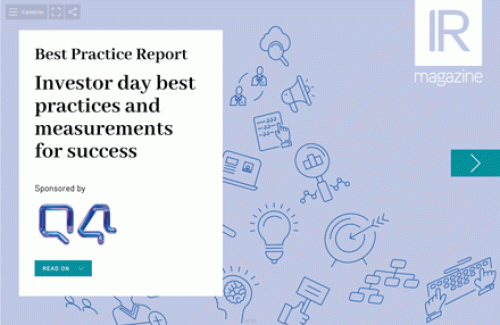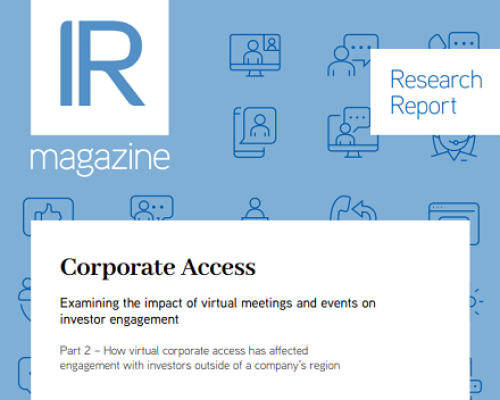Jonathan Allison from Aberdeen Asset Management explains how corporate access could be improved
Jonathan Allison works in the Pan European equities team at Aberdeen Asset Management, and he and his colleagues – who never invest without interviewing management first – run largely institutional assets.
His views carry weight because they reflect an awareness of both Britain and Europe. Aberdeen, which had £184.7 bn ($297 bn) of funds under management at the end of March, places a particularly high premium on insisting that its asset managers visit companies. Its mainstream equity managers make thousands of visits every year to current and potential holdings.
How do you choose between all the offers for meetings from the sell side? We have contacts with the brokers, which we use to facilitate corporate access, and we most often see the companies just after the reporting season. Companies we might not necessarily invest in tend to have target lists of investors they want to meet. On the Pan European team, we manage a sizable amount of money, so our access to senior management teams is quite good.
We have contacts with the brokers, which we use to facilitate corporate access, and we most often see the companies just after the reporting season. Companies we might not necessarily invest in tend to have target lists of investors they want to meet. On the Pan European team, we manage a sizable amount of money, so our access to senior management teams is quite good.
Often, when we are big shareholders, we’d almost be able to go to a company and say, ‘Let’s see the investor relations officer and the chief financial officer.’
In addition, we frequently discuss, for example, one division at a group, or an update on a meaningful piece of news in a 30-minute conference call. So it’s not always a formal meeting to talk about, for instance, the full-year results for 2011 or the group’s corporate strategy.
What advice do you have for companies to make sure meetings run smoothly?
Some of the better IR teams follow up after meetings. When we have a useful meeting with other IR teams, however, they do not always offer us a meeting with the CFO, or perhaps an invitation to an investor day, or a site visit to one of their facilities.
What might corporate access providers do considerably better?
In our case, that means the brokers and, naturally, they vary in quality. The good ones understand, for example, that we might be interested in a particular company and they might then email us to offer a meeting with a competitor or a related company that we, perhaps, don’t invest in.
Then there’s geography: our team is roughly split between London and Edinburgh, and we like it if management teams can go to the Scottish capital. We also have an office in Paris – where I spent four months last year – and we like the opportunity to go to the French capital’s conferences, where you can access 20 companies across three or four days. Similarly, the conferences in our other cities can be useful.
How many times do you meet directors before investing in the company?
If it’s a completely new business, probably two or three times before we even contemplate an investment. Given the importance of understanding the strategy and the business model, the process includes a very thorough initial exploratory visit to the business, and sometimes we just meet the IR team at this stage, when we spend a lot of time and throw many questions at the staff.
The process also includes seeing the management, and a group lunch, for example. Of course, sometimes a company is not entirely new: for example, we have no shares in one big UK retailer, but we know the business.
Do you meet companies to get information about a competitor?
We do, and we help each other on the regional desks so – for example – a colleague on the US team is likely to say, ‘We are covering an American group, can you meet one of its non-US competitors?’
We never meet companies just for this reason, however, so when we do meet the management teams of groups we don’t invest in, we also assess the business, despite the fact that we are not shareholders in it.
How good is access to companies at senior management levels?
Access is better in the UK and improving in Europe. I have been on the pan-European team for seven and a half years, and European companies have been becoming more investor-friendly and have bulked up their IR teams.
Europe’s corporates used to have just one member of staff, who was very busy because he/she was dealing with investors in the US, Europe and the UK.
Now my contact companies often have three or four members of staff in the department, led by one very experienced employee, and a couple of junior members of staff who pass questions to the CFO or handle little questions.
In Europe, you tend to see the IRO and the CFO, not always the chief executive. In the UK, you tend to see the CFO and the CEO as a team. There have also been examples where British IROs have moved into management roles.










